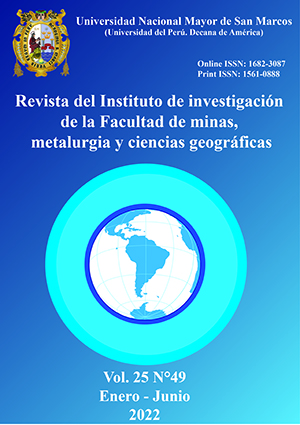Micro plastic: an imperceptible threat on Agua Dulce Beach, Chorrillos District
DOI:
https://doi.org/10.15381/iigeo.v25i49.19219Keywords:
microplastic, Agua Dulce beach, polystyrene, pelletAbstract
The use of plastics in the world is increasing, but their proper final arrangement is limited. Peru made regulatory efforts to reduce its use; however, they are isolated activities that have not represented a significant change in their management. This study allows to identify the presence of microplastic on one of the busiest beaches of the city of Lima Metropolitana, during the emergency period caused by the SARS- COV-2 pandemic. To achieve the objectives of the research, it has been sampled in high tide and supra-coastal areas, applying the methodology proposed in the Ministry of the Environment's Soil Sampling Guide. This study shows the presence of microplastics, with an abundance of 43 pieces per m2, and found that the predominance of the type of microplastic found is of secondary origin (polystyrene and polypropylene); however, 20.9% correspond to primary microplastics (pellets) whose source could not be determined. Finally, it is indicated that despite restrictions on the state of emergency the number of microplastics per m2 in Agua Dulce Beach between 2019 (40 pieces) and 2020 (43 pieces) increased by 7.5%.
Downloads
Published
Issue
Section
License
Copyright (c) 2022 Leonela Lourdes Sánchez Contreras, Angie Luz Huamán Quispe, Omar Jair Ángeles Mendiola

This work is licensed under a Creative Commons Attribution 4.0 International License.
AUTHORS RETAIN THEIR RIGHTS:
a. Authors retain their trade mark rights and patent, and also on any process or procedure described in the article.
b. Authors retain their right to share, copy, distribute, perform and publicly communicate their article (eg, to place their article in an institutional repository or publish it in a book), with an acknowledgment of its initial publication in the Rev. Inst. investig. Fac. minas metal cienc. geogr.
c. Authors retain theirs right to make a subsequent publication of their work, to use the article or any part thereof (eg a compilation of his papers, lecture notes, thesis, or a book), always indicating the source of publication (the originator of the work, journal, volume, number and date).






